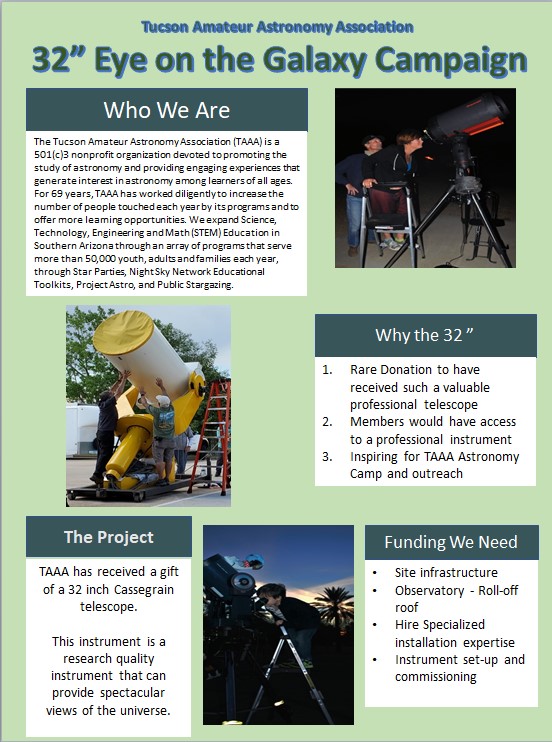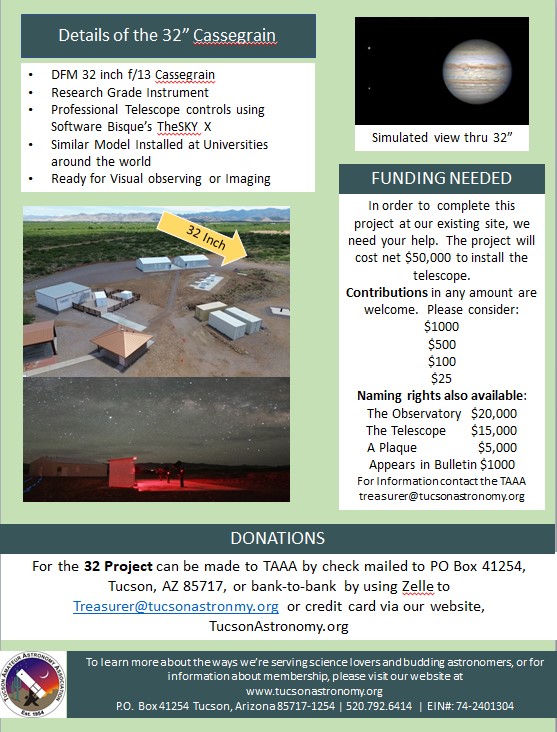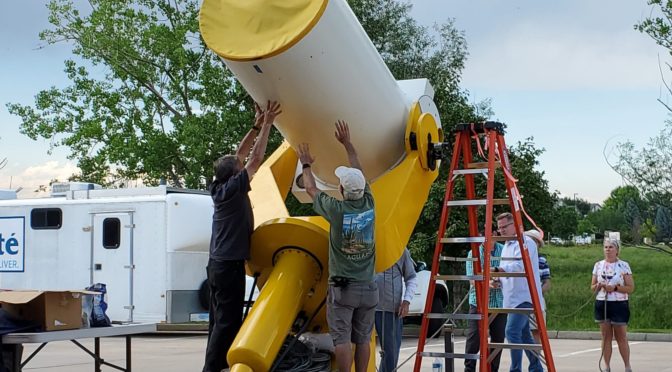Category Archives: 32 inch Cassegrain Project
Planets of the Month – April 2024
by Erich Karkoschka
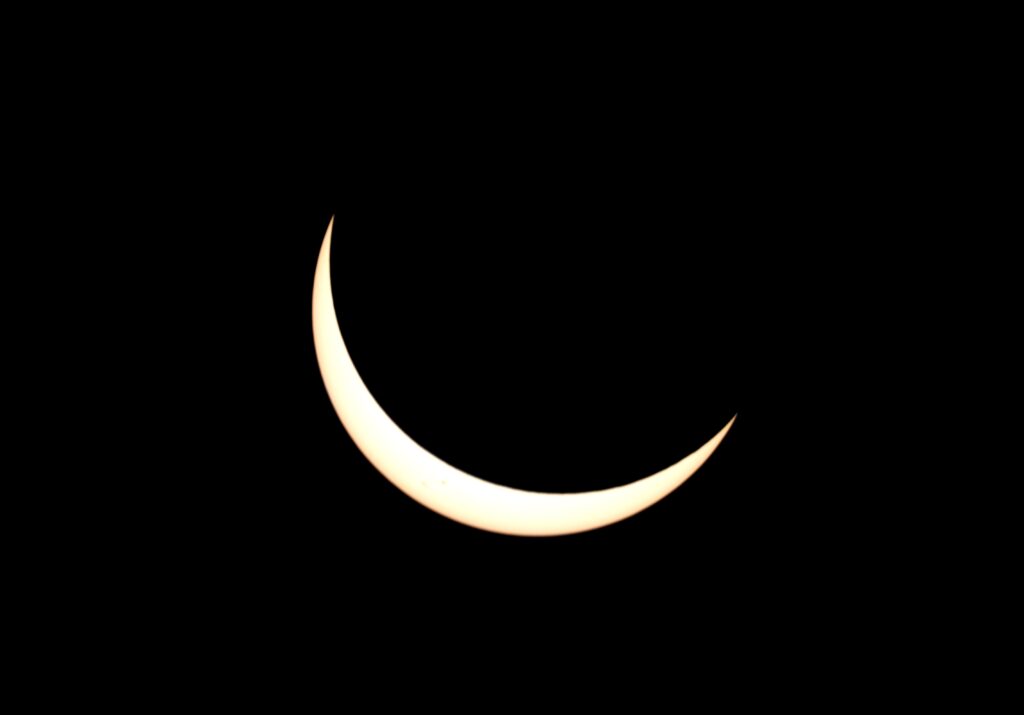
The New Moon on the 8th brings a partial solar eclipse in Tucson during late morning It is total on a path from Mazatlan in Mexico, through Texas, to the Great Lakes. The following day, the thin crescent can be seen just before 8 pm.

Venus rises during the dawn and may be visible naked eye, at least during the first half of the month.

Mars is rising earlier, but it still is not very high when dawn starts.

Jupiter is visible in the west after dusk. By the end of the month it sets at 8 pm, just as it gets dark.

Saturn starts the month just to the lower left of Mars. On the 10th, both planets are only half a degree apart from each other. Both have the same brightness, but not the same color. By the end of the month, Saturn is much higher than Mars, and its rings are quite narrow.

Uranus gets passed by Jupiter on the 20th when they will be only half a degree apart from each other.

Comet 12P/Pons-Brooks is in the vicinity of Jupiter and may be fifth magnitude. It is heading south and is getting really low after mid-month.
Planets of the Month – February – March 2024
By Erich Karkoschka

Saturn is only visible until February 11 during dusk.

Mercury starts its best evening visibility of the year on March 10.

Jupiter transits high at sunset at the beginning of February. However, by the end of March it is already down to 20 degrees high in the west when it becomes visible right after sunset.

Uranus is high in the evening sky and sets around midnight.

Venus and Mars are visible during dawn. First, Mars is difficult to see 10 degrees to the lower left of Venus. On February 22, they are only .6 degrees apart from each other with Venus 100 times brighter than Mars. Then Mars will be to the upper right of Venus with their distance increasing to 18 degrees by the end of March.


The Moon has two conjunctions with Jupiter on February 14 and March 13. The close conjunction with Mercury or February 11 is also interesting to watch since the moon will be a very thin crescent.
There is a penumbral lunar eclipse at midnight of March 24. Since it is almost partial, the darkening will be quite obvious.
Planets of the Month – January 2024
By Erich Karkoschka

Saturn is well visible during the early evening. It sets around 8 pm. Soon it will be too close to the Sun. When it reappears in the Spring, Saturn’s rings will only be half as open as now.

Jupiter transits during dusk. It is very high and good for telescopic observations. On the 20th, Ganymede is transiting the disk after 10 pm, visible as a dark spot.

Uranus is high in the evening sky east of Jupiter.
Neptune is west of Jupiter.

Brilliant Venus is best observed between 5 and 6 am, just before down starts.

Mercury joins Venus, visible until the end of the month. It is to the lower left of Venus around 6-7 am. There is no other star at similar brightness in this area of the sky. If you see one, it is Mercury.

Mars is within half a degree of Mercury on the 27th. Since it is a magnitude fainter then Mercury, it may require very clear air to make it out naked eye. Binoculars will easily show this close pair.
Planets of the Month – December 2023
By Erich Karkoschka

Mercury has a modest evening visibility until December 14th. Look to the southwest around 6 pm with no star nearby to confuse it with.

Saturn transits before dark and is well visible until late evening.

Jupiter shifts its transits from 10 pm to 8 pm during the month. Its elevation is then 70 degrees and its 48 arc-second diameter is perfect for telescope viewing.

Venus comes up around 4 am and is almost 40 degrees high in the southeast by the time the sun rises.

Uranus is east of Jupiter and Neptune is east of Saturn. Both are placed well for evening observation with binoculars.
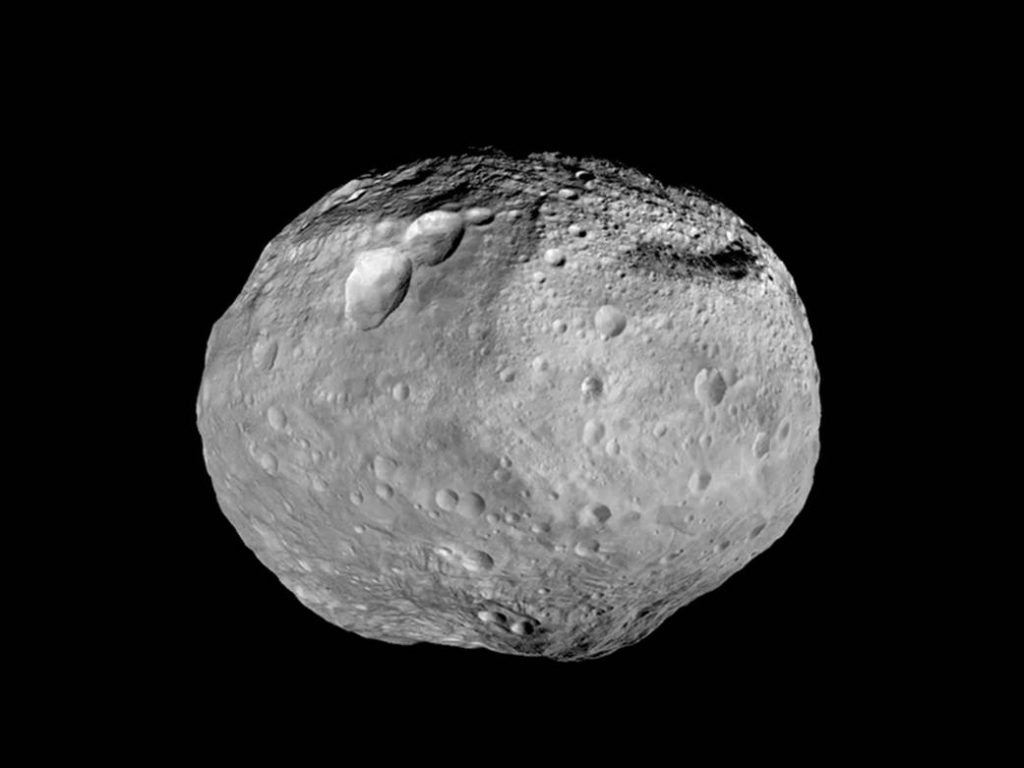
Vesta, minor planet number 4, comes into opposition on December 21st (Winter Solstice). It therefore is very close to the point where the sun is at the summer solstice, between Taurus and Gemini. Its magnitude of 6.4 is at the limit of naked eye visibility.

The Moon visits Venus on December 19th, when Venus is easily visible after sunrise and perhaps even at noon as the moon is a guide to the location of Venus. The Moon is close to Saturn on the 17th.

December 13th is one of the best times of the year to watch meteors as the Gemini’s peak that evening.
Planets of the Month — November 2023
By Erich Karkoschka

Saturn transits just after dark. Its rings are tilted less than during the last 10 years.

Jupiter is at opposition on the 3rd with an almost maximum magnitude of -2.8. It transits 71 degrees high. On the 24th, Ganymede transits on Jupiter’s disk early in the evening, followed by its shadow, lasting until 9 pm.

Uranus is at opposition on the 13th. It lies 10 degrees east of Jupiter at magnitude 5.6.
Neptune is between Jupiter and Saturn.
So, there are all four giant planets in the evening sky.

Venus is just past greatest elongation and very conspicuous at the beginning of dawn.

The Moon is close to Jupiter on the 24th and 25th.
Fundamentals of Astronomy Class
Fundamentals of Astronomy Class open for enrollment
Place: Armory Park Center, 220 S. 5th Ave, Tucson
Date: 3 consecutive Saturdays: February 24, 2024, March 2, 2024, March 9, 2024
Time: 9 AM until 4 PM each day
Synopsis: This class covers all the basic topics in Amateur Astronomy. The course is designed for anyone interested in learning the basic concepts in Amateur Astronomy. Topics covered (but not limited to) include the solar system, deep sky objects, stars, telescopes, eyepieces, mounts, star hopping, observation techniques, plus much more. This course is highly recommended for novice amateur astronomers and for anyone who may have just purchased a telescope for the first time. Taking this class will also aide the student in understanding the more advanced lectures often given during general membership meetings.
If interested you can contact the instructor at the information listed below or sign up using the signup sheet that will be available at all General Members meeting starting October 2023 through February 2024. Enrollment is strictly limited to 20 students and is on a first come basis. If there is sufficient interest the class may be offered again in the fall/winter 2024 time frame.
Instructor – Douglas Smith
Phone: 520-396-3233 e-mail: alcor@tucsonastronomy.org or fundamentals@tucsonastronomy.org
Planets of the Month: September & October 2023
By Erich Karkoschka

Saturn is 45 degrees high during the late evening. Rings are almost half open, the last time for several years.

Jupiter rises at 10 pm during early September, but close to sunset by late October. Its magnitude reaches -2.9, which is as high as it ever gets. Jupiter transits 73 degrees high during the morning hours.

Uranus is 10 degrees east of Jupiter at magnitude 5.7, getting closer to the Pleiades.
Neptune is between Jupiter and Saturn at magnitude 7.8. It reaches opposition on September 19.

Venus rises at 4 am, but later already at 3 am. It is high up by sunrise and is a large crescent in September, reaching half phase in late October. It is brightest in mid-September, and at -4.8, it is really bright. One could find it during daytime, for example around 9:30 am 65 degrees high in the south, or close to the moon September 11-12 and October 10.

Mercury is a morning object from September 15 to October 6, rising at 5 am below Regulus, which is below Venus.
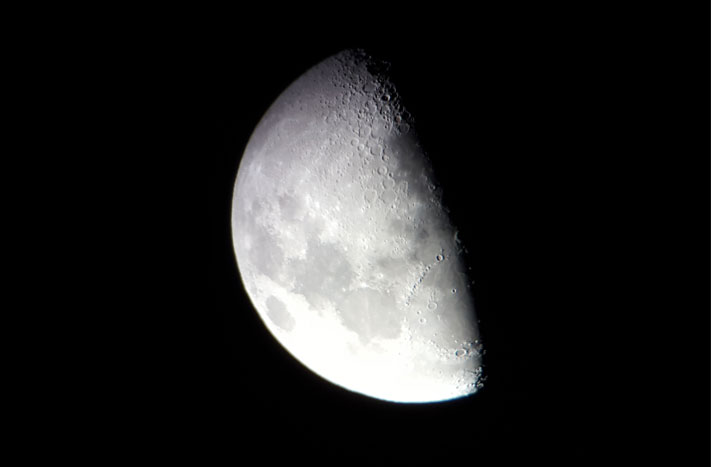
The moon passes Jupiter on September 4, October 1 and 28. It is close to Pollux on the morning of October 7.
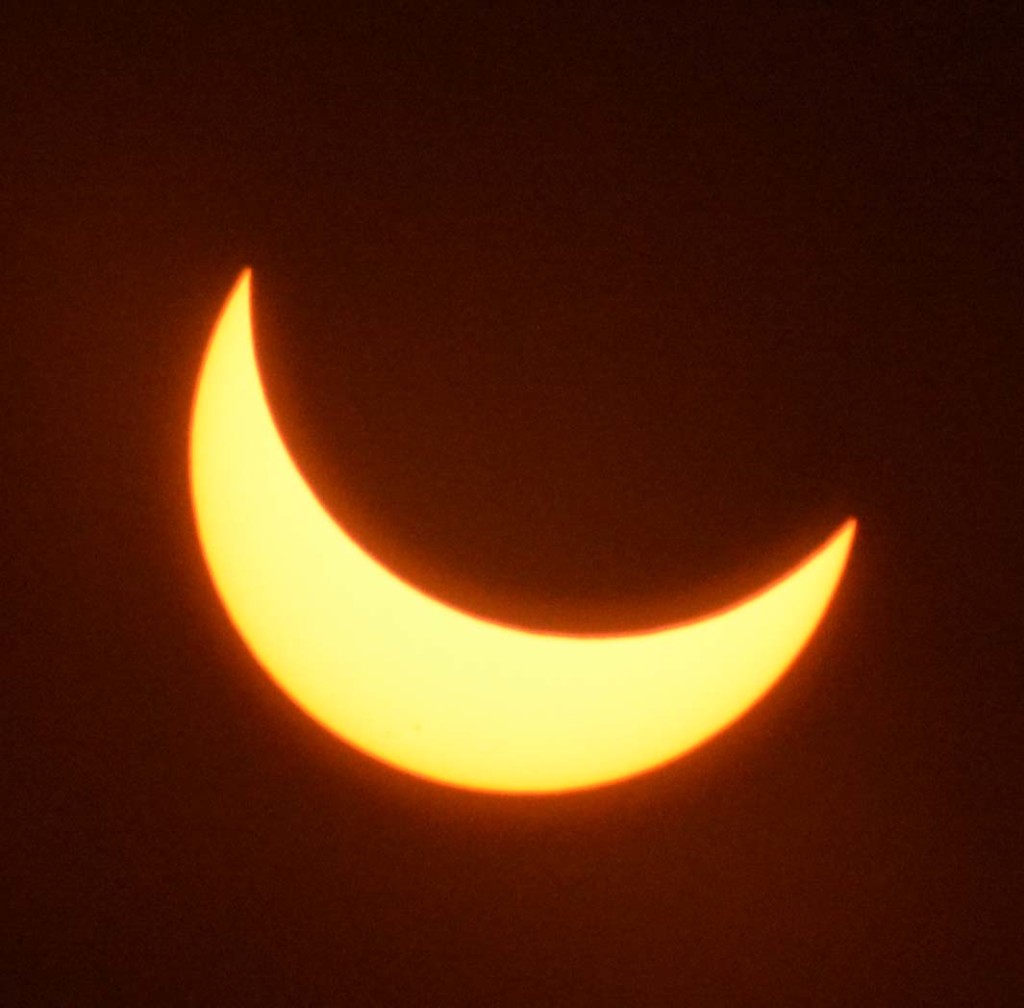
Arizona gets its second and last annular solar eclipse on October 14 with a maximum around 9:35 am. Tucson gets a good partial eclipse, while Four Corners (and parts of New Mexico) get the annular phase. A great event to watch, especially with a filtered telescope. Always use an approved SOLAR FILTER for observing Partial and Annular Eclipses.
Planets of the Month: August 2023
By Erich Karkoschka

Mercury is visible around 8 pm in the west until August 16th.

Mars is about 5 degrees to the upper left during this time, just a little dimmer, but still visible since it is higher up. By the end of the month it becomes hard to find. It will reappear in March 2024. During the first week of August, both planets are best visible. Around the 13th, they are closest together.

Saturn in Aquarius is visible all night since it is at opposition on the 27th. Its rings are narrow, 43″ x 6″ in extent.

Jupiter in Aries rises now before midnight, outshining all stars and other planets.

Venus rises up to become visible starting on the 18th during dawn. It is obvious by the 31st, when a 10 percent illuminated crescent shows up in binoculars. Venus is near the head of Hydra, where other planets do not go.

The moon occults Antares on the 24th between 7:03 and 7:58 pm AZ Time in Tucson. The disappearance is a few minutes after sunset, when it is easily visible in binoculars and impressive in a telescope near the half moon. It occurs at the dark side of the moon which is not visible during bright twilight. The reappearance is at the bright limb, when the sky is dark.

The Perseids are active until mid-month, visible without moonlight. The maximum is the night of the 12th, morning of the 13th. Best viewed under dark skies at the peak after midnight on the morning of the 13th. Look toward the east. The meteors will appear to emanate from the constellation Perseus. The parent comet is Swift-Tuttle (16 miles/26 kilometers across).
32″ Eye on the Galaxy Telescope Project
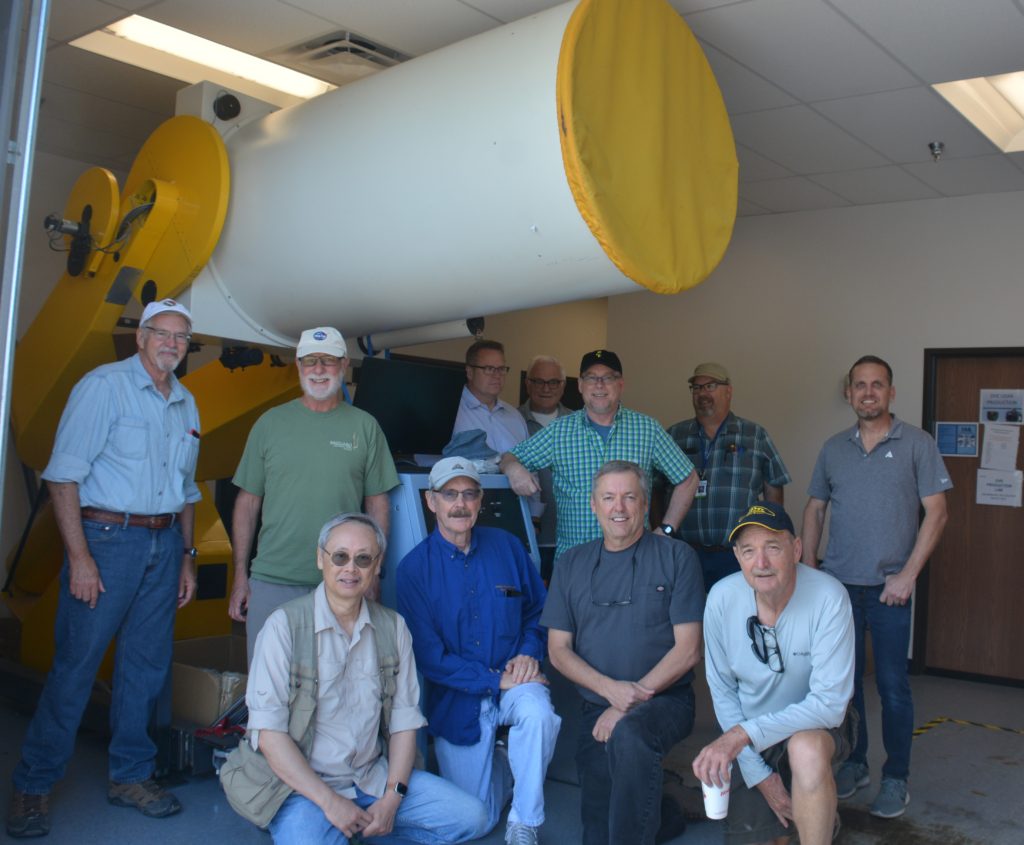
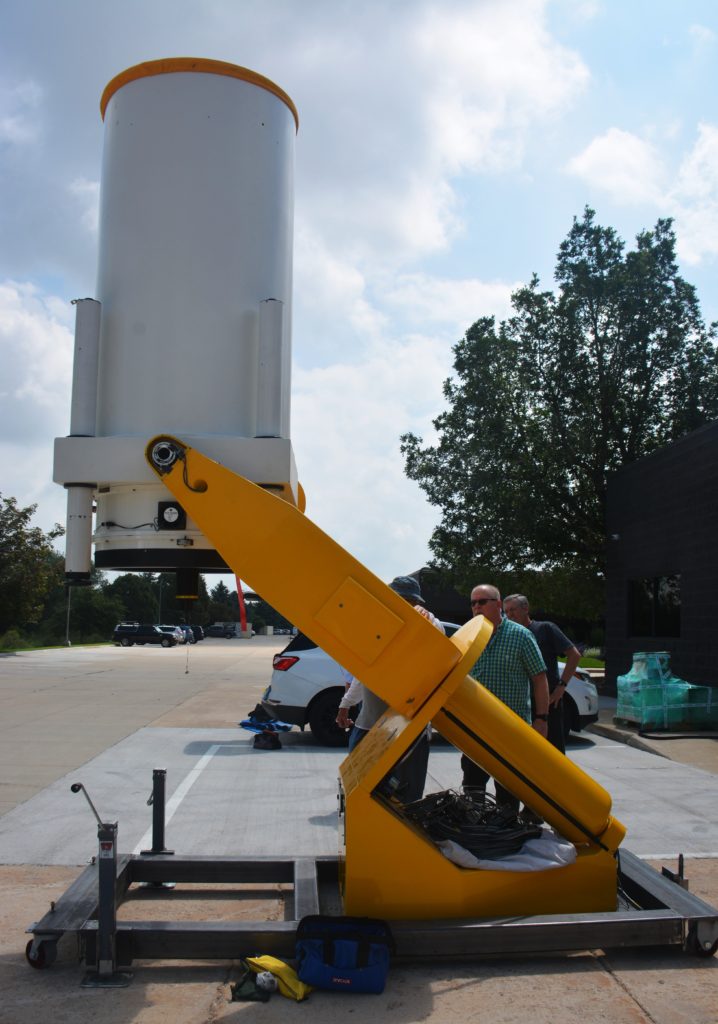
Bob Reynolds’ initial statement regarding TAAA 32 inch Telescope Project
“I’m pleased to announce that TAAA is in active discussions with a donor offering us a professional grade 32” cassegrain telescope, mount, and Ash Dome! As a result, a team composed of TAAA members along with manufacturer and donor representatives will be in Colorado in late June to disassemble, pack and transport the donation to storage sites in and around the CAC.“
In May 2023, TAAA was given the generous gift of a 32 inch research grade Cassegrain telescope, with the proviso we retrieve it from the donor in Colorado before the end of June. The company was moving to a new location and could not take this telescope with them. They had purchased the telescope in 2019. It had not been permanently installed and was unused except for a few demonstrations they had staged. A team of 11 TAAA volunteers, at their own expense, worked to receive the telescope from the donor in Longmont, CO, disassemble the telescope, load over 4100 lbs. into trucks, drive it to Cochise County AZ, unload it and place it into safe storage in a member’s barn.
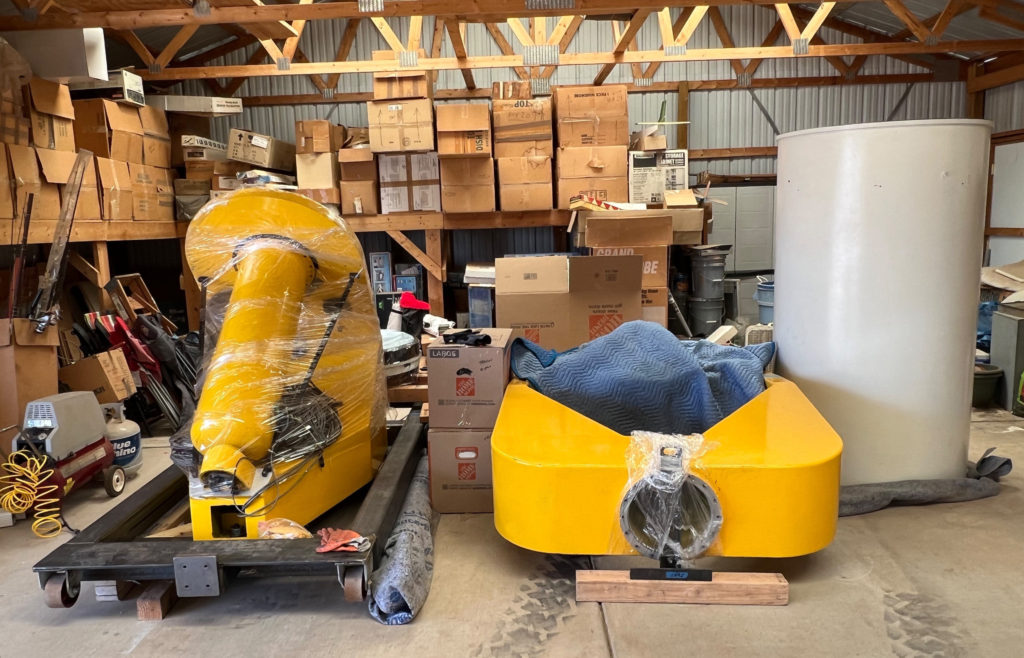
After analysis of the donation with respect to our members and how we might also use it serving the community, it was decided to move forward with the telescope installation. The first steps will be to reassemble the telescope in a newly constructed roll-off roof observatory east of the Mooney Classroom building at TAAA’s CAC dark site.
A TAAA construction team headed by Bob Reynolds and Ed Foley has been formed to attend to the details necessary to complete observatory design, construction and telescope installation. The team will be drawing on the talent and enthusiasm of TAAA to make that happen. The 32 inch Project team now includes Larry Stepp for design and safety, Bob Rose for construction, Doug Summers for optics and Tom Melscheimer for building design and instrument assembly. An Advisory Panel of astronomy professionals and TAAA members was convened in August to consider the current plans and review long term possibilities for this special telescope.
- Phase 1 – Install the telescope in a roll off roof observatory in the state we received it. Train members in its use and get to know its capabilities. Employ the telescope in TAAA outreach programs including the Astronomy Camp program.
- Phase 2 – Consider best use of the instrument for TAAA including potential optical configuration changes.
- Phase 3 – Upgrade the observatory and telescope controls to include remote operations
We have already had many members step up to donate their time to retrieve the telescope and offer to assistance constructing the observatory and installing the telescope. The construction of the observatory and installation of the the instrument is estimated to cost $75,000 in 2024. Anyone who is unable to donate their time but wishing to help with the effort can donate to the effort by noting “32 inch Project” on their check to TAAA, or by clicking the Donate Now button top right of this page.
They story of the telescope to date was reviewed in the September 2023 member meeting:
SEPTEMBER 2023 PROJECT SUMMARY VIDEO
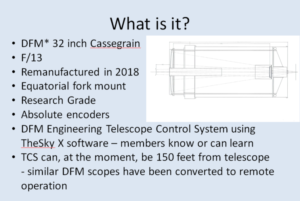
If you would like to support the project, you can also print and send this Pledge Form describing your gift.
Or Donate ONLINE following the button
